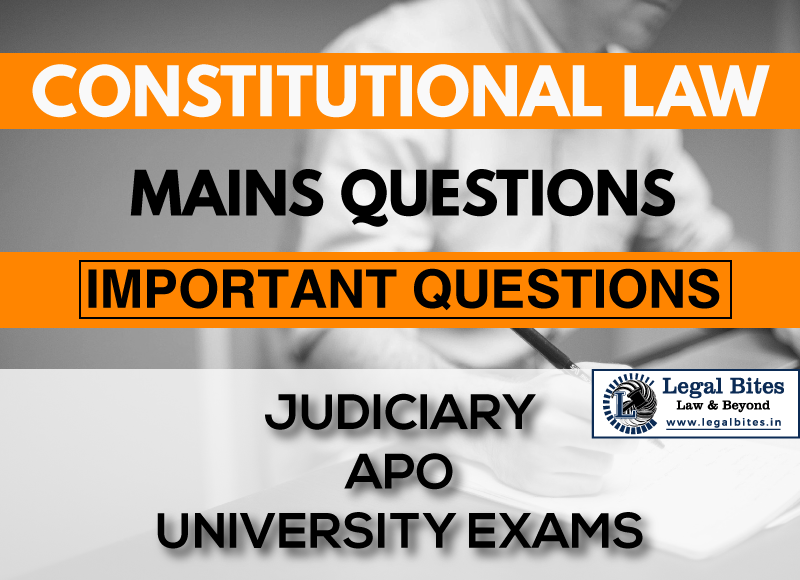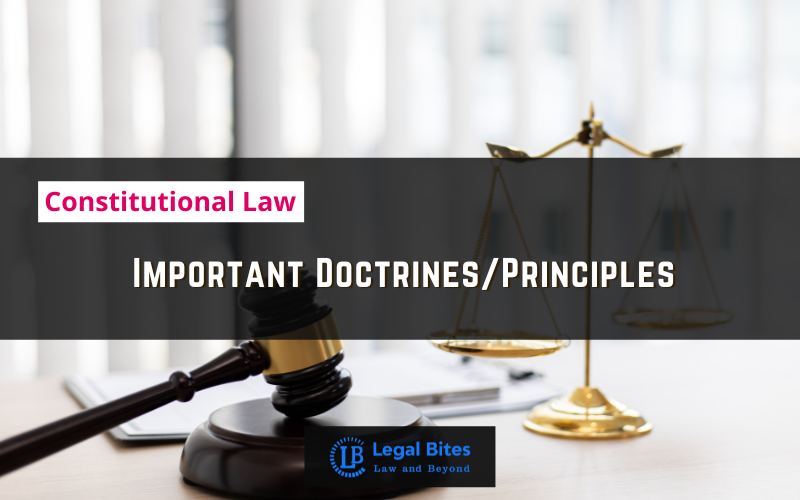Discuss briefly the ‘three leading characters of a completely developed Federalism’ mentioned by Dicey and point out the merits and demerits of a Federal Constitution.
Find the answer to the mains question of Constitutional Law only on Legal Bites.;

Discuss briefly the ‘three leading characters of a completely developed Federalism’ mentioned by Dicey and point out the merits and demerits of a Federal Constitution. [BJS 1978] Find the answer to the mains question of Constitutional Law only on Legal Bites. [Discuss briefly the ‘three leading characters of a completely developed Federalism’ mentioned by Dicey and point out the merits and demerits of a Federal Constitution] Answer Federalism is a system of government in which the...
Discuss briefly the ‘three leading characters of a completely developed Federalism’ mentioned by Dicey and point out the merits and demerits of a Federal Constitution. [BJS 1978]
Find the answer to the mains question of Constitutional Law only on Legal Bites. [Discuss briefly the ‘three leading characters of a completely developed Federalism’ mentioned by Dicey and point out the merits and demerits of a Federal Constitution]
Answer
Federalism is a system of government in which the power is divided between a central authority and various constituent units of the country. Usually, a federation has two levels of government. One is the government for the entire country that is usually responsible for a few subjects of common national interest. The others are governments at the level of provinces or states that look after much of the day-to-day administering of their state. Both these levels of governments enjoy their power independent of the other. According to A.V Dicey, there are three leading characters of a fully developed Federalism. They are briefly discussed as below:
- Distribution of powers among governmental bodies: In a federation, there should be a clear division of powers among the central and state government, each with limited and coordinate powers so that the units and the centre are required to enact and legislate within their sphere of activity and none violates its limits and tries to encroach upon the functions of others. This requisite is evident in the Indian Constitution.
- Supremacy of the constitution: There should be the supremacy of the Constitution of the nation which is not the hand-made of either the Centre or of the States. In case of any violation of the provisions of the Constitutional provisions, the courts of law are there to ensure that the dignity of the Constitution is upheld at all costs.
- Authority of the courts as the interpreters of the Constitution: In a federal constitution, the court of law has the authority to act as the interpreters of the constitution and its provisions. In India, the Constitution has provided for a Supreme Court and every effort has been made to see that the judiciary in India is independent and supreme. The Supreme Court of India can declare a law as unconstitutional or ultra vires if it contravenes any provisions of the Constitution.
Although the idea behind the Federal form of government is to be able to better suit the needs of each area of the country, some issues certainly arise. Following are the outlined merits and demerits of a Federal Constitution:
Merits
- It is suitable for nations having a diversity of race, religion, and language.
- It effectively meets the local needs, with a better understanding of their issues and demands.
- It lessens the burden and responsibilities of the Central government,
- Small states have dignity in a federal form of government and have protection against Tyranny.
- State Governments Can be More Responsive to Citizen Needs
Demerits
- It is highly expensive due to the allocation of powers and budgets.
- There is always scope of conflict of the authority between Union and State government and between the national and local interest.
- It is inefficient because of the diversity of law and administration.
- It allows for regional inequalities between different states.
Important Mains Questions Series for Judiciary, APO & University Exams
- Constitutional Law Mains Questions Series Part-I
- Constitutional Law Mains Questions Series Part-II
- Constitutional Law Mains Questions Series Part-III
- Constitutional Law Mains Questions Series Part-IV
- Constitutional Law Mains Questions Series Part-V
- Constitutional Law Mains Questions Series Part-VI
- Constitutional Law Mains Questions Series Part-VII
- Constitutional Law Mains Questions Series Part-VIII
- Constitutional Law Mains Questions Series Part-IX
- Constitutional Law Mains Questions Series Part-X



